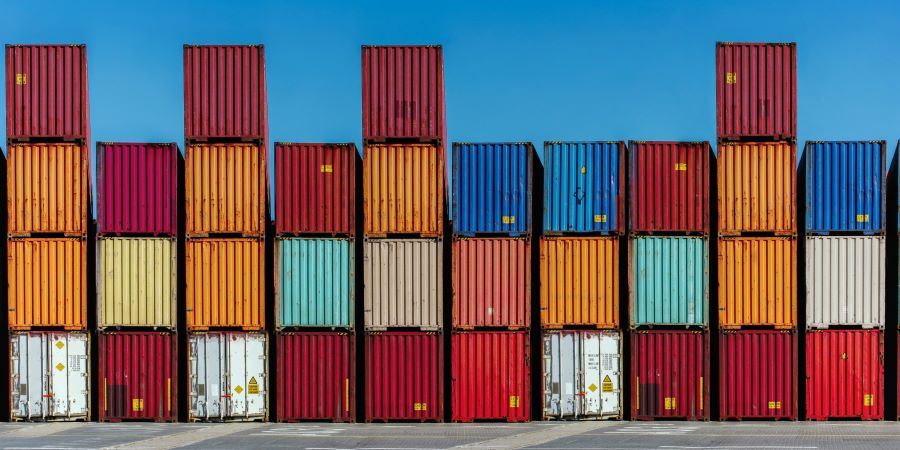by Kristina Hooper, Global Market Strategist, Invesco Ltd., Invesco Canada
A great deal of news has been announced over the last week, and it can be difficult to determine what’s the most meaningful for markets. Here are the items I’m focused on this week.
Global trade. Last week, the World Trade Organization (WTO) estimated that global trade would decrease between 13% and 32% this year.1 (It is worth noting that in 2009, during the Global Financial Crisis, trade dropped 12.5%.1) This wide range is not surprising given that so much of the outcome is dependent on variables such as the ability of countries’ health policies to control the contagion as well as the availability of adequate monetary and fiscal stimulus. In fact, the WTO provided a call to action, “Decisions taken now will determine the future shape of the recovery and global growth prospects. We need to lay the foundations for a strong, sustained and socially inclusive recovery.” In particular, I believe robust fiscal stimulus would clearly make a difference in the shape of the recovery, helping to enable something more akin to a V-shaped recovery. As WTO Director-General Roberto Azevedo explained, “The pandemic cut the fuel line to the engine.” But if the fuel line is reconnected properly, “a rapid and vigorous rebound is possible.”1 Now the question becomes whether the stimulus is adequate enough.
Monetary policy. Last week, the Federal Reserve (Fed) provided a new package of tools to address the damage being created by the pandemic. In short, the Fed bent over backwards even further and has expanded its policy tools in a very substantial way. A few key tools it announced are quite impressive:
- Municipal Liquidity Facility. The Fed will create a special purpose vehicle (SPV) that will purchase municipal bonds in the primary market from U.S. states, as well as U.S. cities and U.S. counties with large enough populations. The SPV will have the ability to purchase up to $500 billion of eligible bonds and is currently slated to end purchases on Sept. 30, 2020.
- Main Street New Loan Facility and Main Street Extended Loan Facility. The Fed will create two different lending facilities (one for existing loans and one for new loans) in order to support lending to small and medium-sized businesses. This is the first time the Fed has embarked on such a direct lending program since the 1930s. The facilities will have the ability to purchase up to $600 billion of eligible loans, with a maximum maturity of four years. Principal and interest payments can be deferred for a year. These facilities are currently slated to end purchases on Sept. 30, 2020.
- Paycheck Protection Program Facility. The Fed will create a facility that will purchase Paycheck Protection Program loans to small businesses in order to encourage banks to make those loans. This facility is also currently slated to end purchases on Sept. 30, 2020.
Fiscal stimulus. While the Fed is providing a massive amount of monetary stimulus, I believe it must be accompanied by appropriate fiscal stimulus. But Congress has not made much progress on a Phase 4 stimulus bill. Senate Republicans would like to provide another $250 billion in aid specifically for small businesses through the Paycheck Protection Program (PPP), adding to the $350 billion already allocated to the PPP in the Phase 3 stimulus package, called the CARES Act. In my opinion, more than $250 billion is needed for the PPP for small businesses, and it needs to come quickly. And more aid is needed for other line items including ongoing payments to households. I expect we will be disappointed, with a smaller Phase 4 fiscal stimulus package – largely focused on the PPP – than needed, with a Phase 5 stimulus package far off in the distance. Although in normal times I am a deficit hawk, these are not normal times and I believe more stimulus is needed. As mentioned above, fiscal stimulus is an important component of reconnecting the fuel line properly.
Presidential politics. Last week saw the withdrawal of Bernie Sanders from the U.S. presidential race. This withdrawal came as a shock to many observers, who thought that the kinds of issues amplified by the pandemic in the United States – lack of universal health care, and wealth and income inequality – would cause Sanders’ more progressive policies to win even more support. And yet instead, Sanders announced the suspension of his campaign.
Just a few months ago, the Sanders campaign had been on fire, and it seemed that he had a very good chance of winning the Democratic nomination for president. Now it seems all but certain that Joe Biden will receive the nomination. I believe the Sanders withdrawal was one reason for the strong rally in U.S. stocks last week. However, I do expect the Biden platform to become more progressive as the campaign responds to an electorate that has been negatively impacted by the pandemic. I expect this to be particularly true if not enough fiscal stimulus is provided now. We run the risk of repeating the errors of the Global Financial Crisis – too much monetary stimulus but not enough fiscal stimulus, a combination that would help capital markets but not the general economy. The wider the wealth gap becomes, the more likely we are to see revolutionary policies rather than evolutionary ones.
Lights at the end of the tunnel. With all the negative news out there, I think it’s important to highlight information about economies that are beginning to recover:
- Last week, Germany released its draft plan to reopen the country after April 19. This includes a requirement to wear face masks in public, limits on public gathering, and a process to rapidly trace infection trains.
- Denmarkis on track to reopen day care centers and schools for children age 11 and under if the number of coronavirus cases remains stable.
- Norway is on track to reopen kindergartens on April 20, followed by older children a week later.
- Some stores will reopen in Austria on April 14, while Bulgaria is reopening farmers markets.
- Auto sales in China improved significantly in March after a pandemic-induced plunge. Sales last month were down 43% from a year earlier, which was a marked improvement over February, when sales were down 79% from a year earlier.2 China’s economic activity has slowly started to improve, but it is clearly improving.
Stay safe and be well.
This post was first published at the official blog of Invesco Canada.









